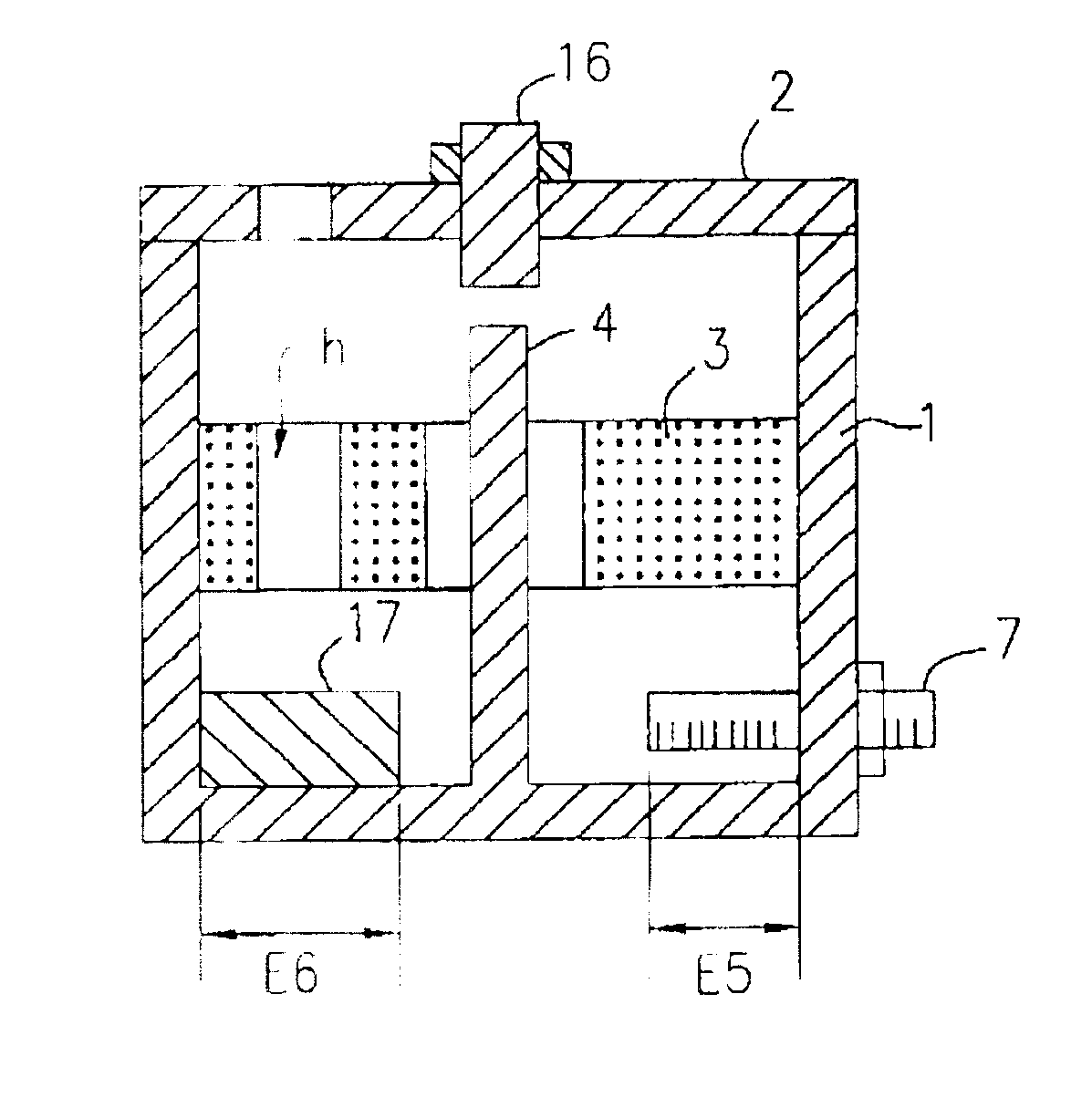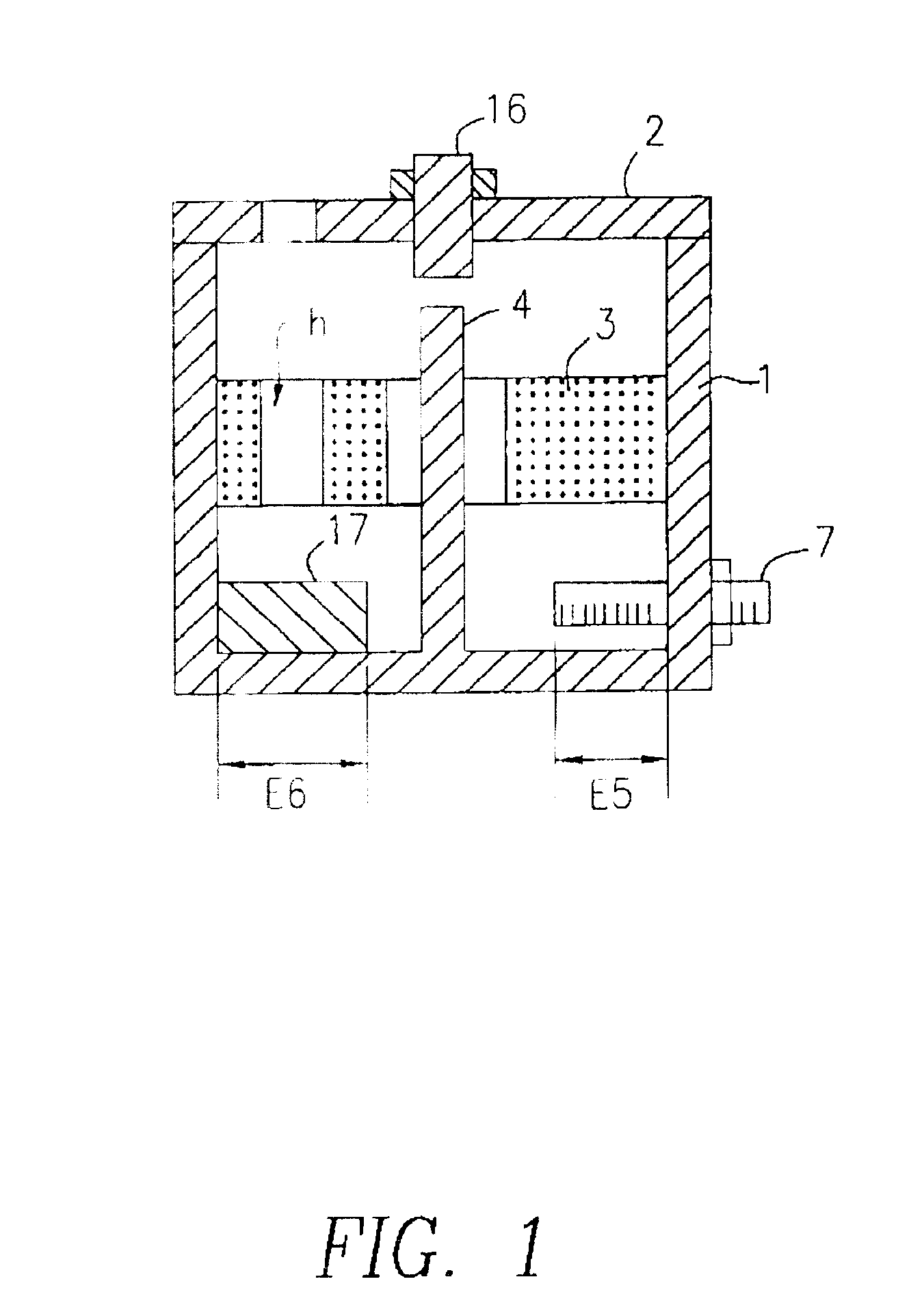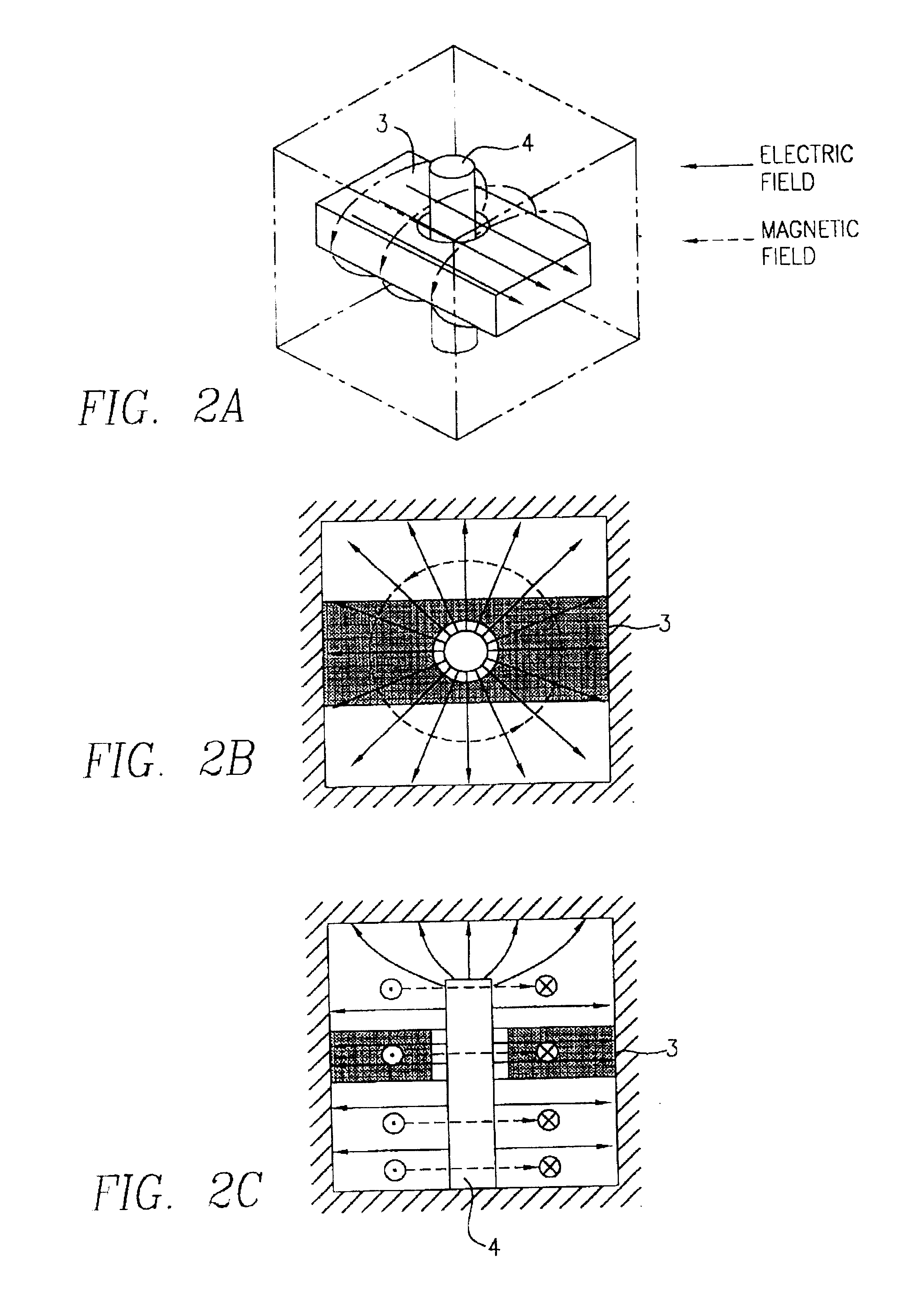Resonator device, filter, duplexer, and communication apparatus using the same
a technology of resonator and duplexer, which is applied in the direction of resonators, electrical devices, waveguides, etc., can solve the problem of enlargement of the entire filter
- Summary
- Abstract
- Description
- Claims
- Application Information
AI Technical Summary
Benefits of technology
Problems solved by technology
Method used
Image
Examples
first embodiment
[0047] With reference to FIGS. 1 to 5, a description will be given of the structure of a resonator device according to the present invention.
[0048] FIG. 1 is a section showing the structure of a dual-mode resonator. In FIG. 1, reference numeral 2 denotes a cover for covering the opening part of a cavity 1. At the center of the cavity's cover 2, a frequency adjusting screw 16 is disposed to adjust a resonant frequency by setting a predetermined distance between the top end of a conductive rod 4 and the inner surface of the cover.
[0049] Both end faces of the lengthwise direction of a dielectric core 3 are bonded with the inner wall surfaces of the cavity 1. In this example, an Ag electrode is formed on each of the end faces of the dielectric core 3 and the end faces are connected to the inner wall surfaces of the cavity 1 by soldering in such a manner that the dielectric core 3 is positioned at the center of the space inside the cavity. The cavity 1 and the cover 2 are formed by cutti...
second embodiment
[0061] Next, as the present invention, a resonator device having three resonators will be described with reference to FIGS. 6A to 6D to FIGS. 9A and 9B.
[0062] Each of FIGS. 6A and 6C is a perspective view of a resonator device using triplex resonance modes obtained by summing a TM dual mode and a TEM mode. In each of the figures, reference numeral 1 denotes a cavity and the inner surfaces of the cavity 1 are outlined by two-dot chain lines. A dielectric core 3 is formed by arranging two prism-shaped dielectric cores perpendicular to each other to make a configuration in the shape of a cross. At the center of the dielectric core 3, a cylindrical hole is formed and a conductive rod 4 is inserted therein.
[0063] In the example shown in FIG. 6A, as in the case of coupling between the single TM mode and the single TEM mode shown in FIGS. 3A to 3D, in this case, with a TMx mode and a TEM mode as two coupling modes, a coupling adjusting block 17 is disposed at a place where the magnetic fie...
third embodiment
[0073] Next, a filter according to the present invention will be described with reference to FIG. 10.
[0074] In FIG. 10, each of reference characters RWa and RWb denotes a dual-mode resonator using a TM mode and a TEM mode. The basic structure of each resonator device is the same as that shown in FIG. 1 and FIGS. 2A to 2C. Reference numerals 8a and 8b denote coaxial connectors, and the central conductors of the coaxial connectors are connected to coupling loops 9a and 9b. A coupling loop 10ab is coupled with the TEM-mode magnetic fields of the dual-mode resonators RWa and RWb. As a result, the two TEM modes couple with each other via the coupling loop 10ab. The coupling adjusting blocks 17a and 17b provide coupling between the TM modes and the TEM modes of the dual-mode resonators RWa and RWb. Coupling adjusting holes ha and hb are provided for adjusting the couplings between the TM modes and the TEM modes of the dual-mode resonators RWa and RWb. By inserting a dielectric rod in each...
PUM
 Login to View More
Login to View More Abstract
Description
Claims
Application Information
 Login to View More
Login to View More - R&D
- Intellectual Property
- Life Sciences
- Materials
- Tech Scout
- Unparalleled Data Quality
- Higher Quality Content
- 60% Fewer Hallucinations
Browse by: Latest US Patents, China's latest patents, Technical Efficacy Thesaurus, Application Domain, Technology Topic, Popular Technical Reports.
© 2025 PatSnap. All rights reserved.Legal|Privacy policy|Modern Slavery Act Transparency Statement|Sitemap|About US| Contact US: help@patsnap.com



